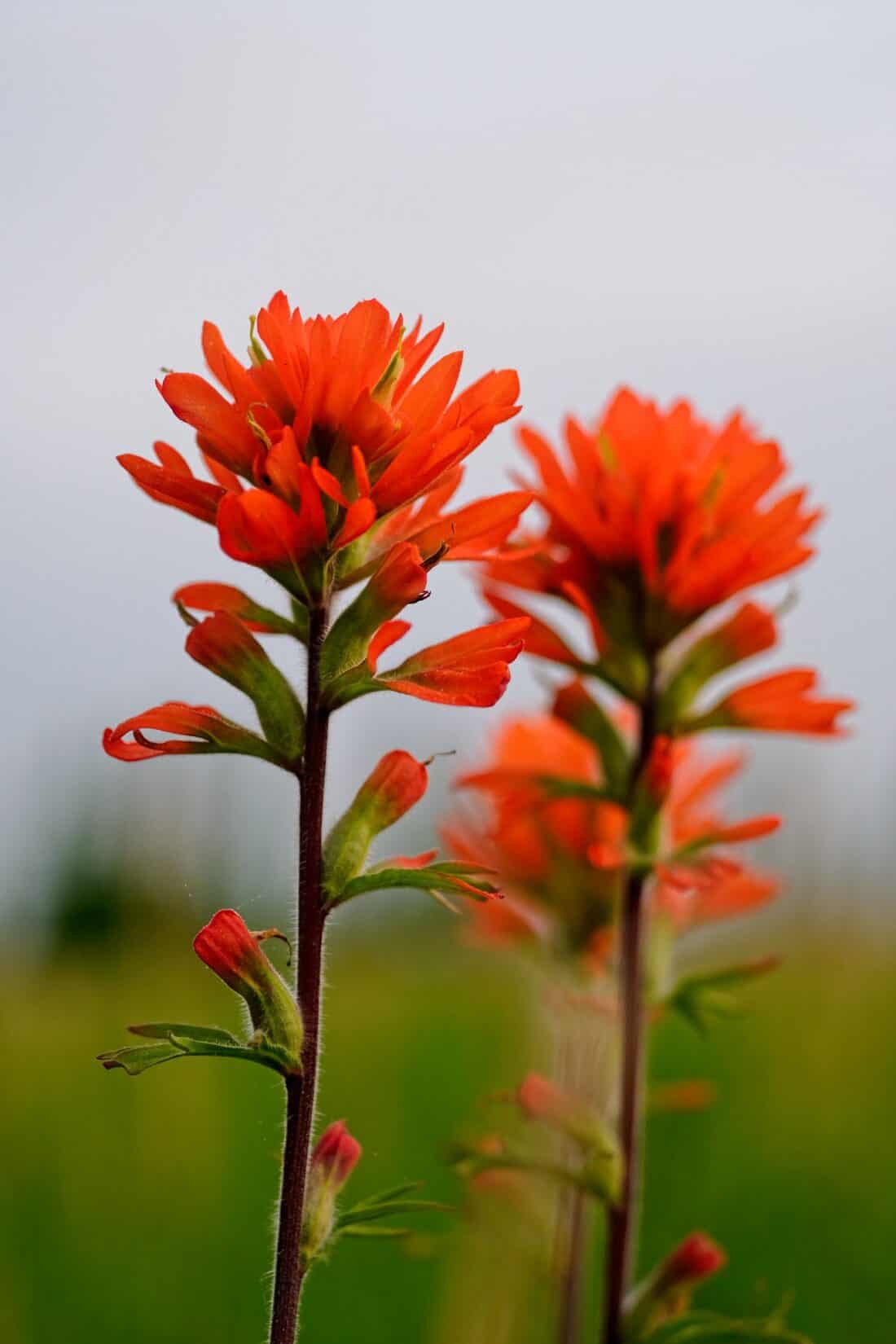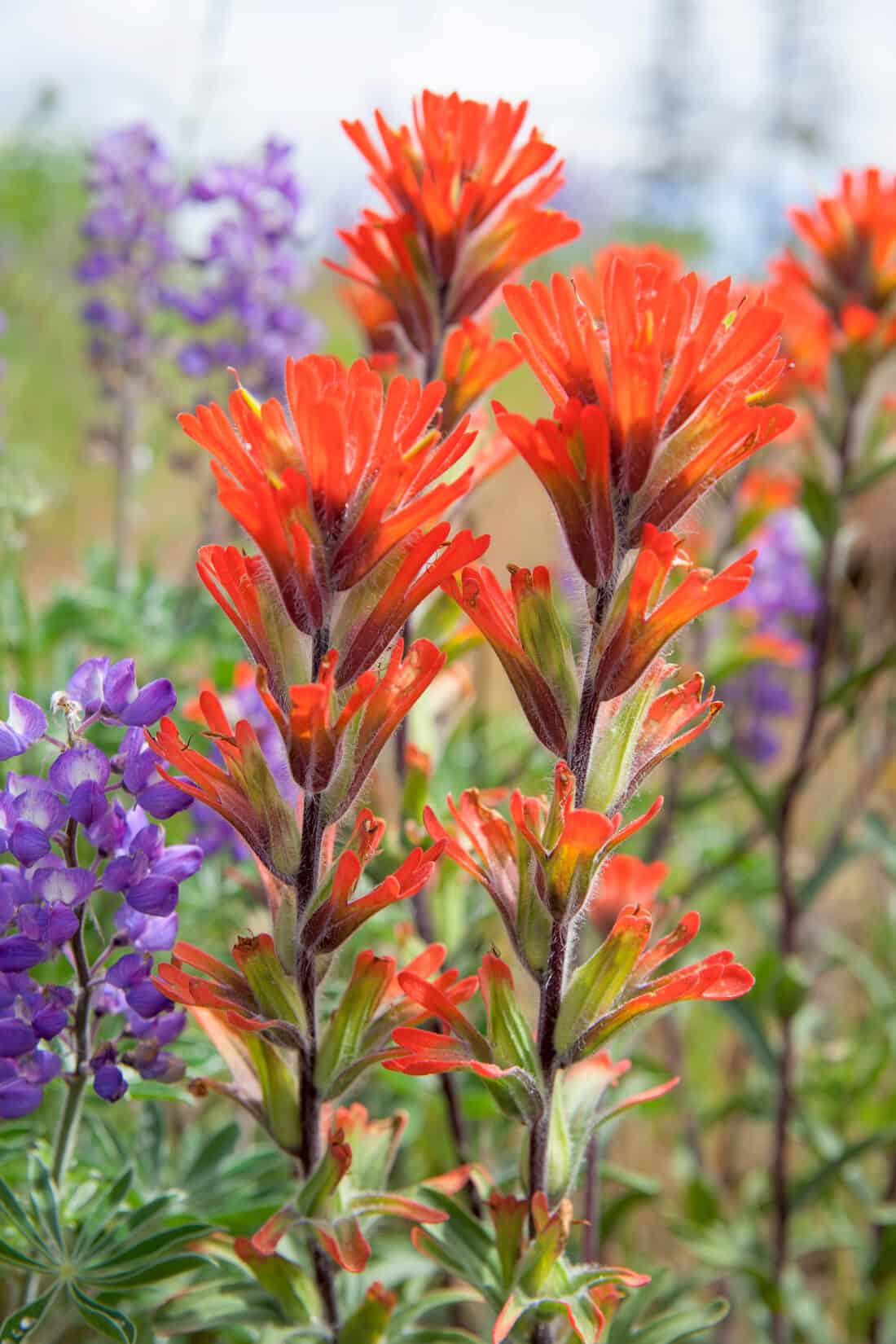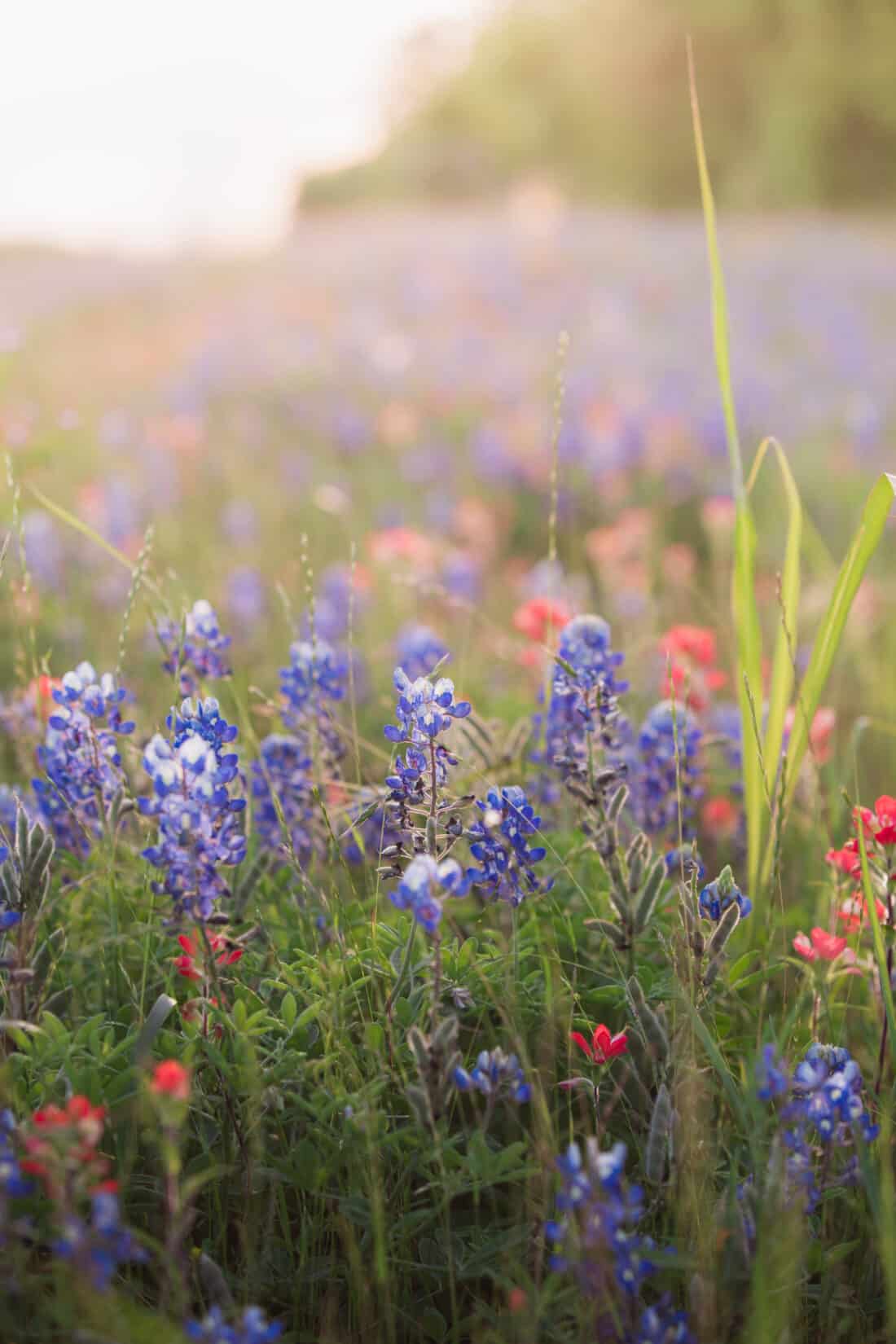Indian Paintbrush, with its striking and vibrant bracts, is a captivating wildflower that graces North American landscapes. As a kid growing up in the West, it was always along the roadsides – I especially remember Indian paintbrush in Wyoming as we made the long drive from Colorado to grandma’s house in Montana. It is a plant I notably miss now that I live in New England, and I’ve been researching if I can plant Indian paintbrush seeds in my own garden or if they are available as plants. What I learned about the Indian paintbrush flower is more interesting than I thought.

This native beauty is known for its showy spikes of tubular, colorful bracts that resemble brush strokes dipped in paint. Interestingly, the showy Indian paintbrush flowers are not actually flowers at all—the red bristles are not petals but modified leaves.
It’s known for its potential as a wild edible, and many native tribes consumed it. It’s also a wildflower worth growing and encouraging in your garden, particularly if you live in its native range.

Castilleja chromosa (Indian paintbrush) is a wildflower regularly seen along roadsides in western states such as Colorado, Montana, Wyoming, Oregon, Idaho, California, Texas, and New Mexico. There are over 200 varieties of Castilleja. All are native to the western USA, and many are regionalized natives to smaller areas.
How to Cultivate Indian Paintbrush
Growing Indian Paintbrush can be a rewarding endeavor, but it is not as straightforward as just planting. a seed.
Castilleja chromosa is a hemiparasitic plant, which means that it can survive on its own, but it will not thrive unless it is also (like a parasite) acquiring resources from a host plant.
Hemiparasitic means it is like a hybrid parasite – it can live without the host plant – but not well and not long.
If you plant a hemiparasitic plant from seed, you need to plant it along with a host plant. Low-growing grasses and sedges are good partner host plants for Indian paintbrush.
Try growing an Indian paintbrush with any of these options:
- Blue Grama (Bouteloua gracilis)
- Juncus species (Juncus spp.)
- Buffalo Grass (Buchloe dactyloides)
- Pennsylvania Sedge (Carex pensylvanica)
- Sweet Grass (Hierochloe odorata)
- June Grass (Koeleria macrantha)
Interestingly there is evidence that the Indian paintbrush will also find a host in many other plants, including some non-native weeds:
- Roemer’s Fescue (Festuca roemeri)
- Yarrow (Achillea millefolium)
- Oregon Sunshine (Eriophyllum lanatum)
- Thimbleberry (Rubus parviflorus)
- Oxeye Daisy (Leucanthemum vulgare)
- Sheep Sorrel (Rumex acetosella)
- Canada Thistle (Cirsium arvense)
It is probable that there are other plants that can serve as hosts, and it is worth experimenting with these plants to determine their capabilities.
How to establish the parasitic relationship when planting Castilleja varieties
In order to establish the parasite-host relationship, you can try a few different methods, including:
- Direct sowing indian paintbrush seeds into meadows adjacent to a host plant
- Sow indian paintbrush seeds in trays with a host plant and then transplant the two species together into the landscape
- Cutting back a host species to the ground and then planting the seed into the stem or crown of the host plant in the fall
- Plant in fall as a single species in trays. Combine with fertilizer applications to support the plant growth without a host. Then transplant into the field where host plants already exist
Alternatively, you can purchase Indian paintbrushes already potted and grown. But be prepared—they will have been planted with a host plant that needs to remain in your planting scheme.
Does Castilleja support pollinators?
Indian Paintbrush is one of the larval host plants of the Chalcedon Checkerspot, Edith’s Checkerspot and of the Theona Checkerspot.

As a native wildflower to North America, its range spans from coast to coast and from alpine meadows to arid deserts. You’ll find various species across different regions, each adapted to their specific habitat. Indian paintbrush always has a hemiparasitic relationship with other nearby plants and each supporting pollinators of the region.
How to use Indian Paintbrush in your landscape
In garden design, the Indian Paintbrush brings a touch of the wild to cultivated spaces. Its vibrant spikes can serve as focal points in native and wildflower gardens, creating eye-catching displays in early summer. To complement their striking appearance, consider companion plants like Penstemon, Lupine, or Blue Grama Grass (Bouteloua gracilis). These combinations evoke the charm of natural landscapes while supporting local wildlife and pollinators.
It’s a good choice for Rock gardens, hummingbird and butterfly gardens and naturalized desert scapes. Some varieties – particularly the Texas variety of Indian Paintbrush is happier in wet meadow.
The Indian paintbrush, also commonly known as Castilleja, holds a significant meaning in Native American cultures. There is a great children’s book that tells the story – The Legend of the Indian Paintbrush. The Indian paintbrush legend is a story about a young Native American who is told (in his vision quest) that he is meant to paint pictures and record the stories of his people. Additionally, his paintings will be the colors of the sunset. Initially, he is unable to find the right colors. But his he is patient and is eventually rewarded with a gift of beautiful paintbrushes he uses and leaves on the ground. It is a story about recognizing your talents and purpose.
This vibrant wildflower with its striking red, pink, and orange hues symbolizes love, transformation, and spiritual connection to the earth. Beyond its symbolic significance, there is a lesser-known fact about the Indian paintbrush – it is actually edible!
Can you Eat Indian PaintBrush?
Short Answer – Yes and maybe NO.
Let me explain. Various American Indian Tribes consumed the edible and sweet flowers of Indian Paintbrush in moderation as a condiment with other fresh greens. When properly prepared, its delicate petals can serve as a garnish, infusing salads, desserts, and various culinary creations with a mild, earthy flavor and a vibrant burst of color. It is an intriguing addition to the list of edible wildflowers.
Before you eat indian paintbrush flower – you have to make sure it isn’t growing in toxic soil. It is crucial to identify it properly and exercise caution about where it is harvested.
Castilleja chromosa (indian painbrush), have a tendency to absorb and concentrate Selenium in their tissues. They absorb the selenium from the soils in which they grow, and subsequently, can be potentially toxic if the roots or green parts of the plant are consumed. Do not eat the plant at all if harvested from an area where there are high concentrations of Selenium in the soil.
Where to Buy Indian Paintbrush Plants and Seeds
You can buy Indian Paintbrush from Prairie Moon – they sell it already with a host plant of a native grass or perennial.
There are many places where you can purchase seeds – just remember that you will also need to also grow it with a host plant.
Other Posts you might be interested in:
images: By jpldesigns, pepperberryfarm, christy
Although Castilleja is very beautiful it is extremely hard to grow and does not just rely on sage brush but on several Pacific Northwest native grasses. This post was a bit misinformed and misleading. If you do get the mix right it can take three years before they germinate.
There is nothing like seeing it bloom in the deset though!